Spider plants are beautiful plants that add a fun vibe to your home! With their unique leaves and their structure, they can add the pop of color and personality that you need in your space. If you are unsure about how to care for them or what types of spider plants there are, you are in the right place!
Spider plants were the second type of plant I ever owned. (The first was a pothos plant!) They’re great for beginners since they’re super tough plants and very forgiving.
My grandma had a super mature spider plant that produced tons of baby plants that she was always giving me. Her one plant provided me with so many spider plant that eventually started producing babies that I was able to share with others. They’re the plant that keeps on giving!
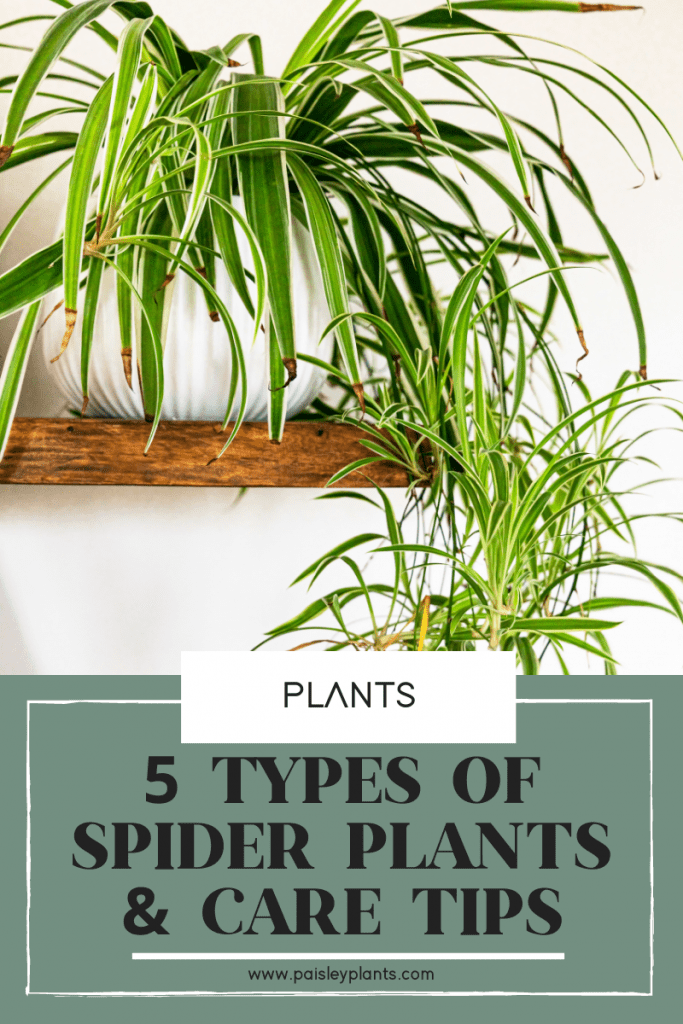
Spider plants are unique and native to tropical regions and southern Africa, but you can grow them from the comfort of your own home as indoor plants. They are non-toxic and can grow up to two feet. Ideally, these plants like to be in 70–90-degree F temperatures and nothing too hot or too cold.
Today, we are going to talk about how to care for spider plants, the different types of spider plants, and if they would be right for your home. First, let’s dive into the necessities for caring for your spider plants!
Table of Contents
Spider Plant Care
Spider plants are great for beginners and are extremely easy to care for. Luckily, there are not that many concerns to consider keeping them healthy and growing well! They can be grown indoors or outdoors, and they regularly show offshoots when they enter maturity.
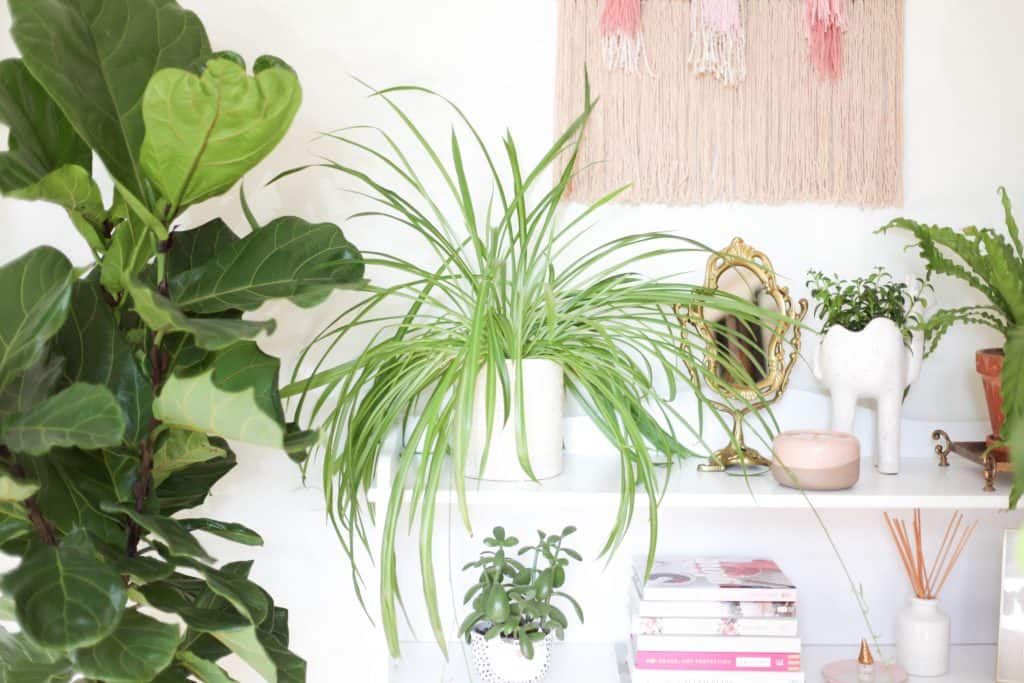
They also can purify the air, making them a great addition to anyone’s home! Add a few of these to a room and you’ll not only love how they look but they’ll also help clean the air. Here are some valuable tips for caring for your spider plant.
Find other plants that purify the air here!
Lighting
These plants thrive best when they are in indirect light. Spider plants are not the plants that you want to take out to your porch and put outside in bright light on a sunny day when there’s not a cloud or shade to cover them.
Too much direct sunlight is not good for spider plants and will cause their beautiful green leaves to start wilting. They need more care, and they likely need to even remain in the house if possible.
If you want to allow them the best chance of survival and growth, find a corner that has some light but not too much. You will see them happily growing in no time!
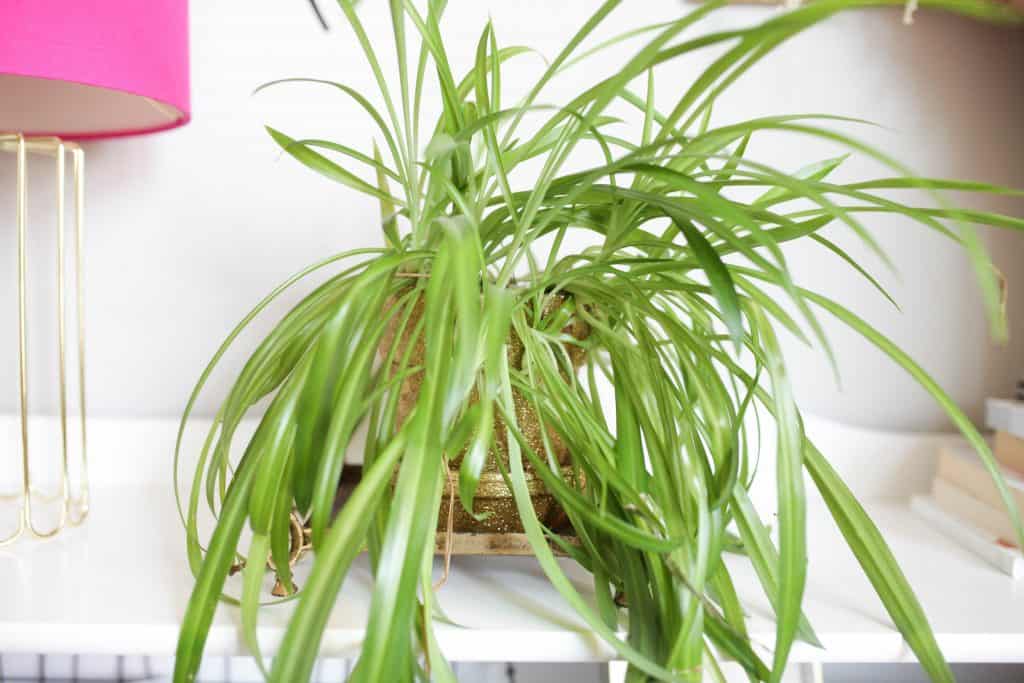
If you must try a few different spots in your house a shot, don’t worry! It can take a few tries to find the perfect location for your beautiful spider plant.
They aren’t quite as finicky as other plants (like a fiddle leaf!) that don’t want to be moved around. Just be sure to give it ample time to adjust to it’s new spot before moving it.
Watering
Most spider plants do best when they’re watered about once a week. They do best with filtered water rather than tap water. Tap water can cause browning on the tips of the leaves.
You can easily neutralize your water by filling up a watering can and leaving it out over night! Doing that will not only neutralize the water but also makes the water room temperature so you’re not using water that’s too cold and too warm.
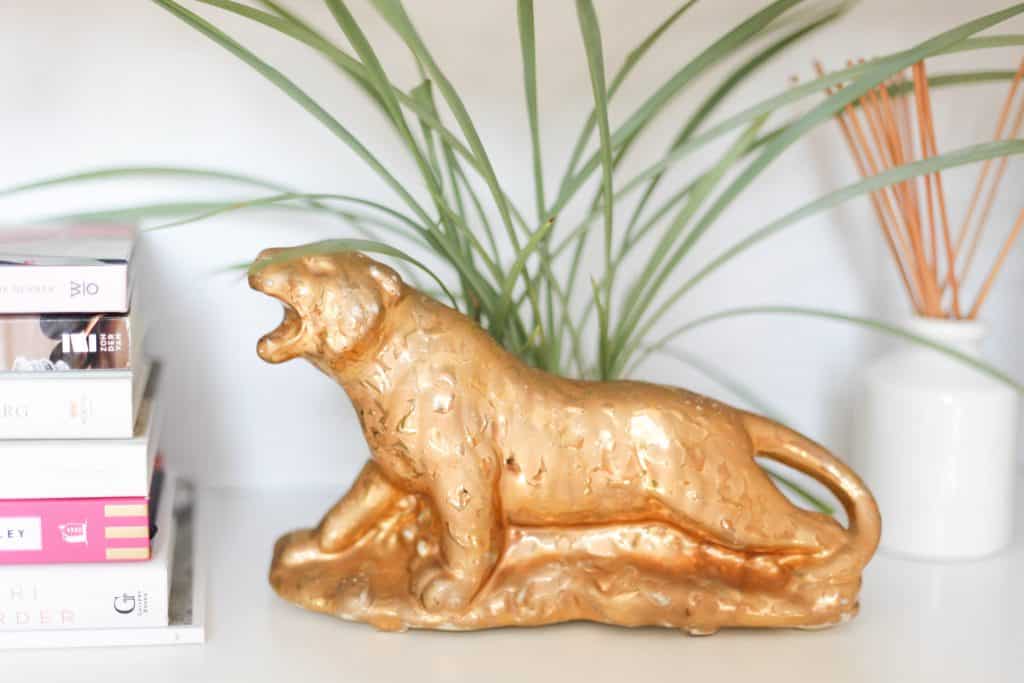
Watering does change with the seasons too. You might need to water your spider plant more in the summer and then less in the winter months. Whatever happens, make sure you don’t drown your spider plant. It is best to let the soil dry and then apply water to the plant to know that it truly needs the nutrients!
Spider plants can be susceptible to root rot if overwatered. Be sure to stick your finger into the soil to check to see if it’s wet or dry. If it’s wet, don’t water it. If it’s dry, give it a good soak!
Spider plants also do well with a good amount of humidity so keep that in mind! A bathroom is a great spot for your spider plant.
Find other great bathroom plants here!
Pruning and Trimming
Pruning spider plants can be a great way to manage the size and keep them within a good healthy range. While spider plants might have limitless bounds in the wild, you need to prune every so often to keep your spider plant nice and healthy!
Propagating
You might notice as time passes on and your plant matures, you will have a few baby spider plants on the edges of your parent plant. These are opportunities for you to grow another spider plant in its own pot, but make sure that you don’t do it too early!
The longer you wait, the more full your young plants will get. Also if you wait a bit longer typically more new plants will appear giving you more options of plants to propagate.
The more new spider plants you have the more full and lively your propagated plant will be. If you are interested in propagating your spider plant, you can keep your babies attached to the mother plant and then place it in water to encourage it to root.
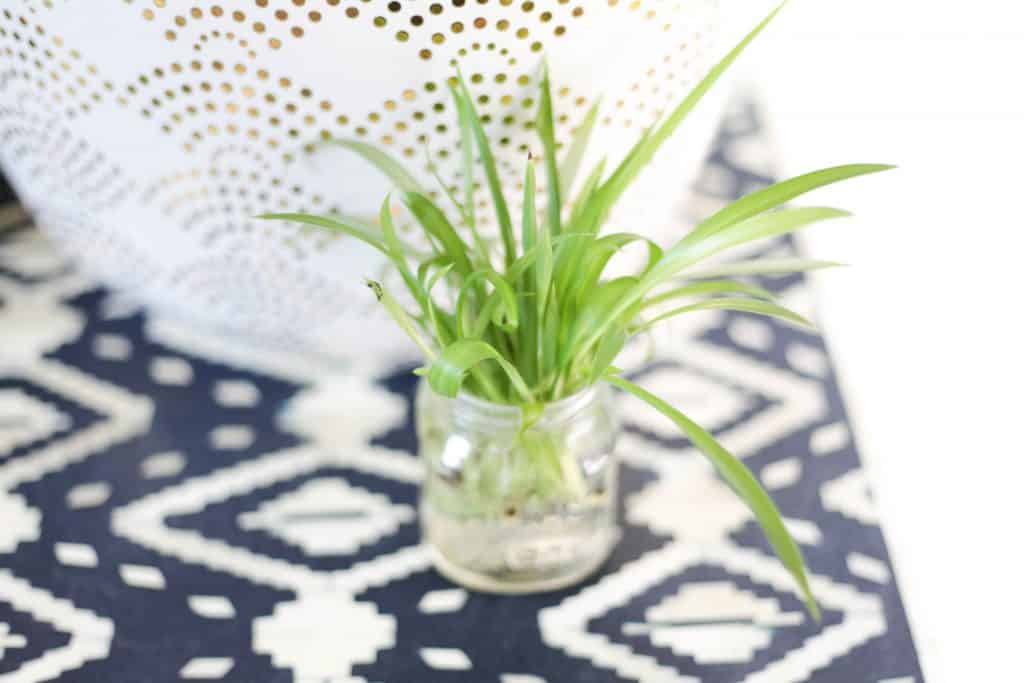
If that seems annoying you can also cut them away from the parent plant. When you do trim them you can either water propagate them and put them in a propagation station or glass of water until they form roots or just repot them directly into a pot to create a new plant.
Brown Tips on Your Spider Plant
Brown tips on your spider plant isn’t always a sign of the plant dying as mentioned above. You can trim them off as they appear. On reason for browning is using tap water straight from the faucet.
An easy way to fix this is to use distilled water instead. This could stop the browning of the plants and allow you to get your plant back to healthy once again!
To get distilled water all you need to do is fill up your watering can and leave it out overnight. This will neutralize it and help prevent brown leaf tips.
Sometimes, this browning is due to less moisture. In the winter if you are in a colder climate, be sure to mist your plant when needed. This can also assist with any browning and dryness that your plant might be experiencing.
Pests
With spider plants, there are some pests that you might see. These plants are known for housing aphids, mealybugs, and spider mites. When you see them, you can take care of them using non-toxic pest killers, or even be sure to keep your plant outside in the warmer months, if possible, to avoid these pests in your own home.
Toxicity
With dogs and cats, these are luckily non-toxic plants. However, it is strongly discouraged to have your cats or dogs eat them. This should be avoided. Cats have a unique and hallucinogenic response, so these plants should be out of the cats reach and away from them as best as possible.
Types of Spider Plants
Now that we have discussed how to take care of them, here are the most popular spider plant species, what makes them unique, and how you can implement them in your living spaces.
1. Chlorophytum Comosum “Vittatum“
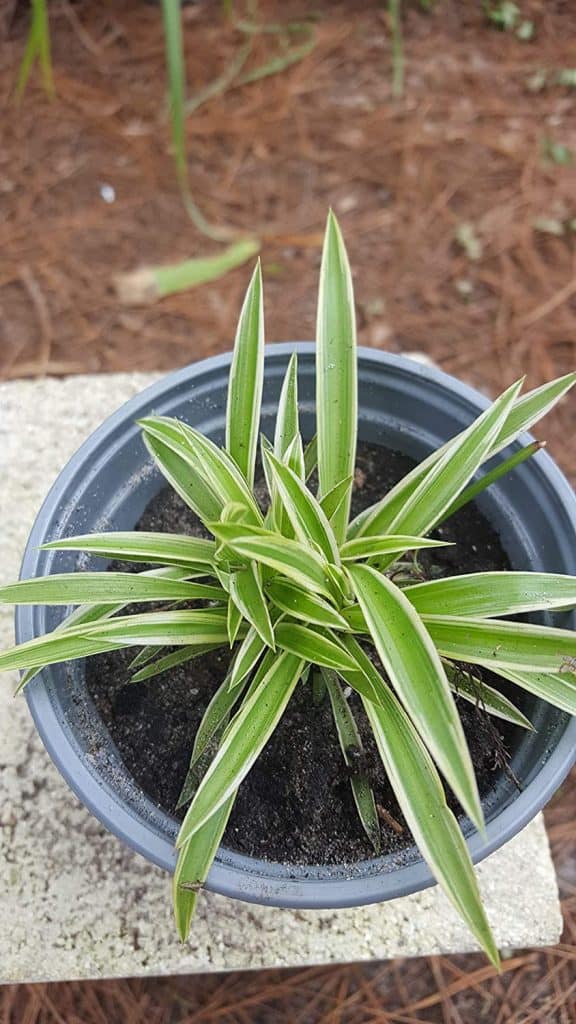
Image via Amazon where you can order one!
This is one of the most recognized species of spider plant and has a broad white stripe down the middle of its leaves. The leaves themselves have a medium green color and they are slightly curved.
These plants can make excellent hanging plant and be a great addition to your home or to your garden. You can put them in a hanging basket on your wall or ceiling and allow their long leaves to hang down or just place them on a shelf!
This species of spider plant is a perennial variety and can grow up to 1-2 feet long and wide. With the proper pot, this spider plant can grow to be a stunning and large plant in your home .
2. Chlorophytum Comosum “Bonnie“
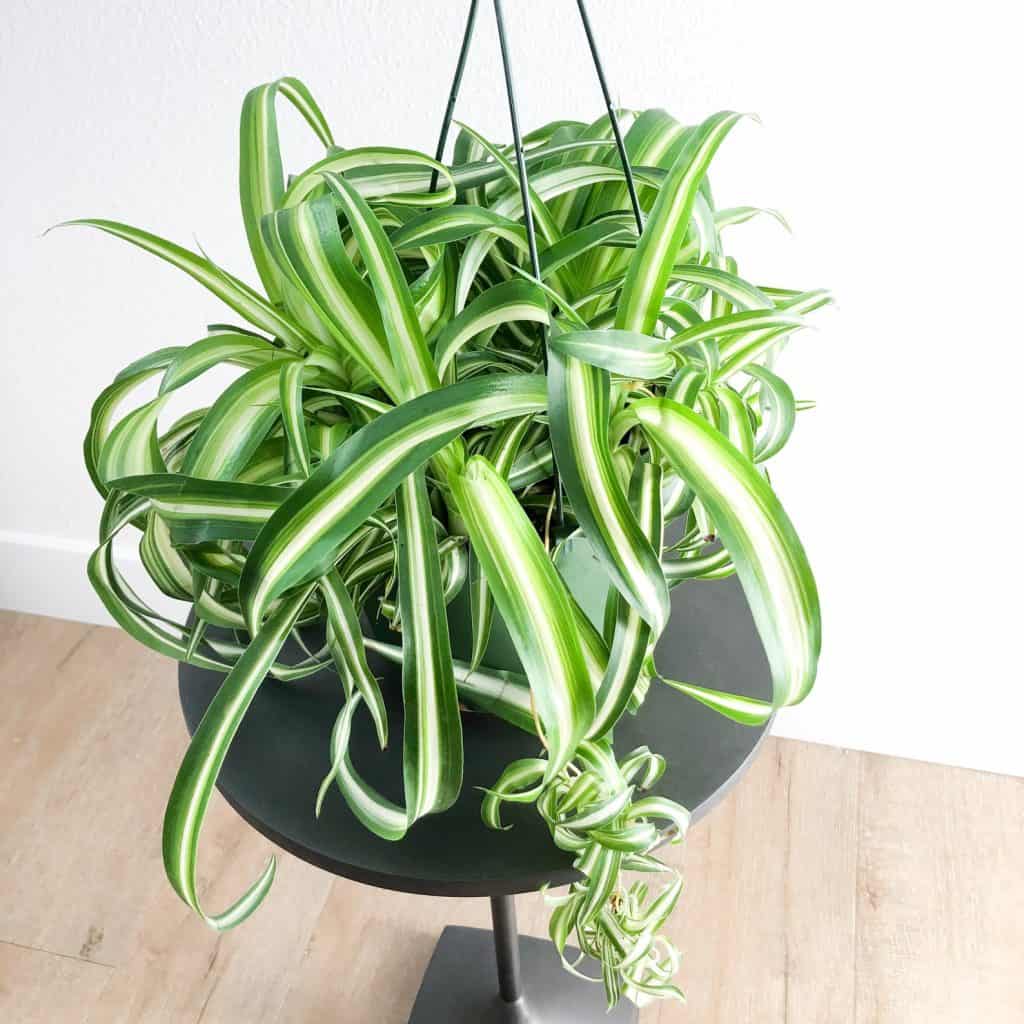
Image via Etsy
Known as the “Bonnie”, this plant is like the Chrolophytum Comosum Vittatum but has more curly leaves. They begin to curl once they are long enough. Despite their unique appearance, they are easy to care for and they have narrow leaves. These spider plants can be 8-18 inches long and are great in small rooms.
They are often seen in balconies, bathrooms, or compact spaces. They are often affectionately called the “toilet plant” because of their use in these small spaces. When blooming, these have beautiful yellow flowers.
3. Chlorophytum Laxum “Zebra”
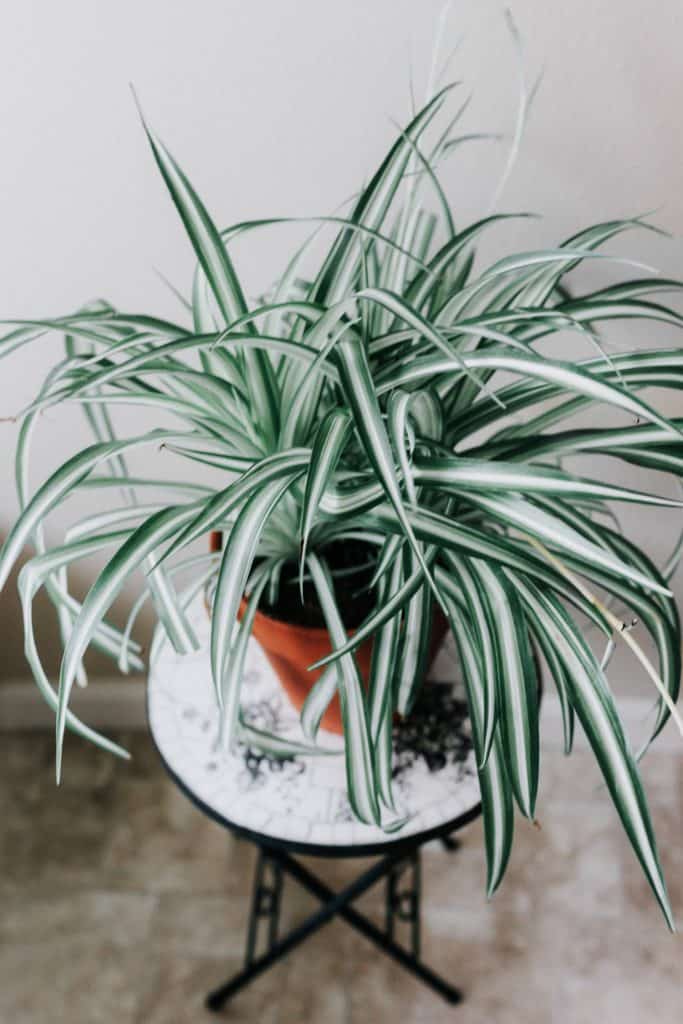
Image via Houseplant Academy
Many people recognize the Zebra species because of the yellow edges that end up turning white, thus the name! These are often best in hanging baskets or with ground cover and can be a beautiful and lighter alternative to other spider plants. They are great in full sun to partial shade and follow other general care instructions listed above.
For those who are beginners to keeping plants, this is a great starter plant and can last a long time. They are incredibly tough and don’t need much upkeep other than the general watering and sun requirements.
4. Chlorophytum Comosum “Variegatum”
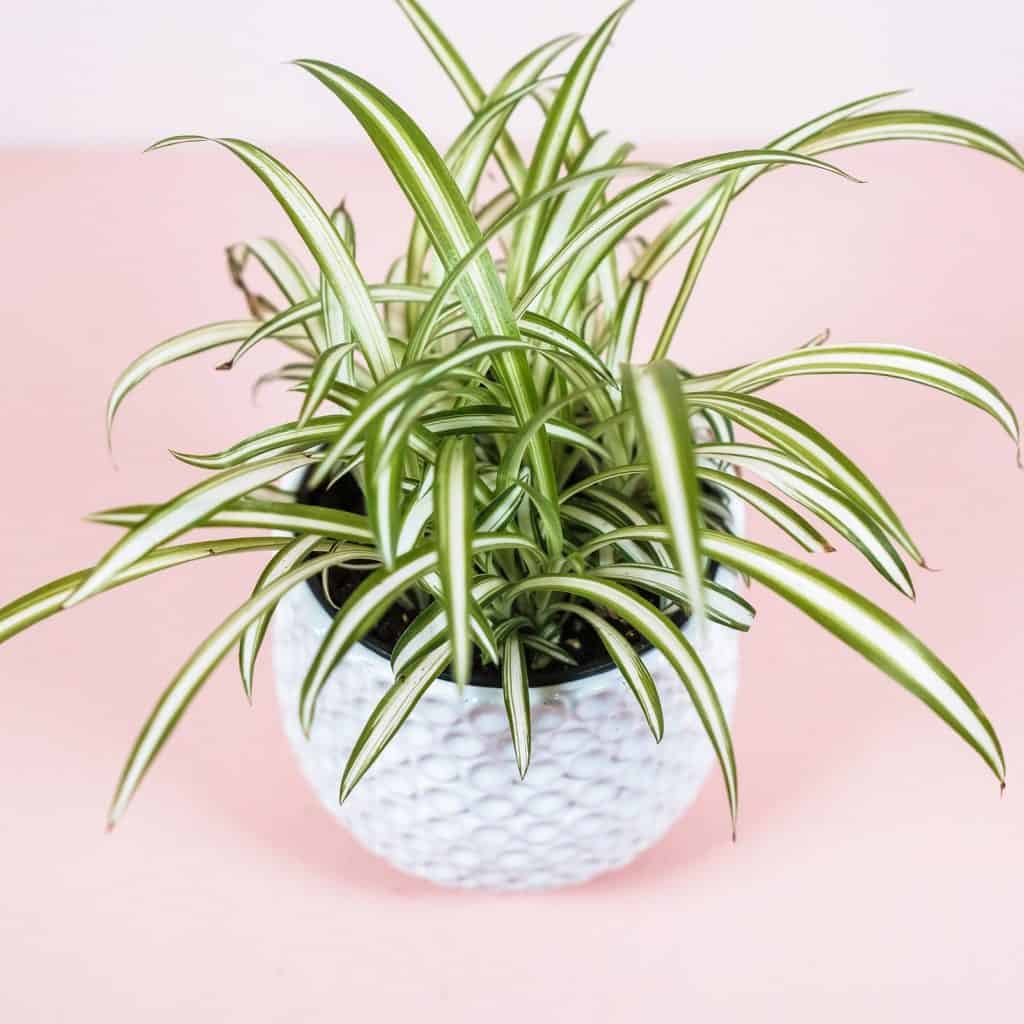
Image via Etsy
Known by the name Reverse Variegatum these spider plants are among the most popular choices for those looking for a spider plant in their home. They are the opposite coloring of the Vittatum. The arching leaves have white edges instead and there are darker green stripes down the center of each leaf.
This plant is incredibly attractive, and many people prefer this because of the unique variegation style. This plant does require a lot of bright sunlight. If it doesn’t have a lot of sunlight, this plant will lose its coloring and the uniqueness of its appearance.
5. Chlorophytum Viridescens “Hawaiian“
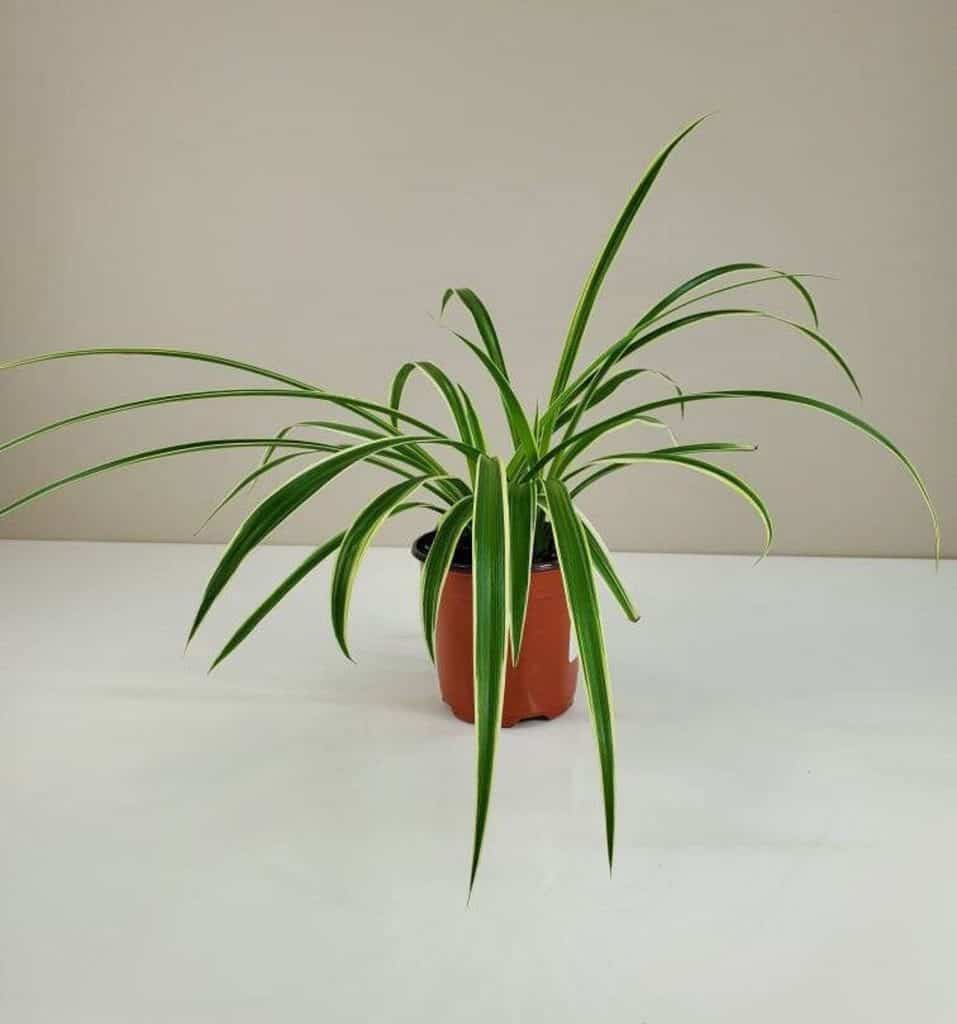
Image via Etsy
The last variation of the spider plant we want to share is the Chlorophytum Viridescens or the common name, Hawaiian spider plant. This is a great plant with much more vivid coloration and generally bright to dark green in nature.
They are also known as Golden Glow. They are smaller, but they have great potential for propagation, and they can be added to any living space.
This plant grows well in the moist environments and needs well-draining soil in a pot with drainage holes to help it grow properly. It also needs full sun to partial shade. It can grow up to 6-12 inches high, making it a smaller but beautiful addition for your home.
Conclusion
Spider plants are great for beginners and a wonderful addition to any home! With their compact size and their air purification abilities, they can amplify your living space and assist with keeping a clean and pure home.
They are also incredibly easy to propagate as the become mature plants making them an easy gift for friends and family!
For more information on other plants, check back on our blog for more updates about plant care, species, and more!
Head here to see our 19 favorite indoor plants!

